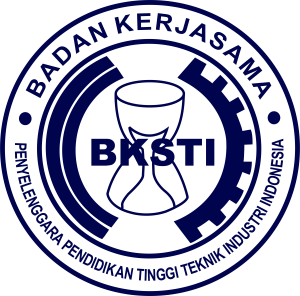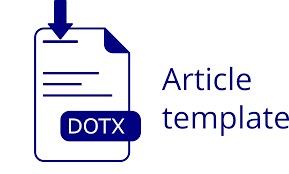Analisis Beban Kerja Mental Karyawan Departemen Engineering Pada PT. Z Menggunakan Metode NASA-TLX
DOI:
https://doi.org/10.37090/indstrk.v8i1.1167Abstract
Human resources (HR) work activities are very important for business processes, so human resource factors must be taken into account and paid attention to. This research was conducted at the Engineering Department of PT. Z is responsible for product design and product development. This research aims to measure the workload of Engineering Department employees at PT. Z in order to increase employee productivity. This research uses the National Aeronautics and Space Administration Workload Index (NASA-TLX) method. This method is used to analyze the mental workload felt by Engineering Department employees when carrying out work activities and is expected to improve an existing system to increase work comfort and productivity. Based on the final NASA TLX score for the Engineering Department of PT Z, five employees have a very high level of mental workload, two employees have a high level of mental workload, two employees have a medium level of mental workload, and one employee has a light level of mental workload. Then for the mental workload of PT employees. Z based on the NASA-TLX method obtained an average WWL value of 72.9, which means it is included in the mental load classification, therefore there is a need for work improvement. Keywords: Ergonomics, Mental Load, NASA-TLX, WorkloadDownloads
References
Alamsyah, P. N., & Sutrisno. (2023). Analisis Beban Kerja Mental Pada Karyawan Office Menggunakan Metode Nasa-Tlx Di Pt. Total Auto Mandiri. Industrika: Jurnal Ilmiah Teknik Industri, 7(1), 49–56. https://doi.org/10.37090/indstrk.v7i1.819
Diniari, H. R. (2019). Analisis Stres Kerja Akibat Beban Kerja Mental Pada Pekerja Pt. Kerta Rajasa Raya. Medical Technology and Public Health Journal, 3(2), 133–140. https://doi.org/10.33086/mtphj.v3i2.685
Fahamsyah, D. (2017). Analisis Hubungan Beban Kerja Mental Dengan Stres Kerja Di Instalasi Cssd Rumah Sakit Umum Haji Surabaya. The Indonesian Journal of Occupational Safety and Health, 6(1), 107–115. https://doi.org/10.20473/ijosh.v6i1.2017.107-115
Fauzi, S. (2017). Analisis Beban Kerja Mental Menggunakan Metode NASA-TLX Untuk Mengevaluasi Beban Kerja Operator Pada Lantai Produksi PT. PP. London Sumatra Indonesia Tbk, Turangie Palm Oil Mill, Kabupaten Langkat. 1–50.
Hancock, P. ., & Meshkati, N. (1998). Human Mental Workload. Elsevier Science Publisher.
Hubarat, Y. (2017). Dasar-Dasar Pengetahuan Ergonomi. Media Nusa Creative.
Mahawati, E., Yuniwati, I., Ferinia, R., Rahayu, P. P., Fani, T., Sari, A. P., Setijaningsih, R. A., Fitriyatinur, Q., Sesilia, A. P., Mayasari, I., Dewi, I. K., & Bahri, S. (2021). Analisis Beban Kerja dan Produktivitas Kerja (R. Watrianthos (ed.)). Yayasan Kita Menulis.
Penulis. (2023). Analisis Beban Kerja Mental Karyawan Departemen Engineering Pada PT. Z Menggunakan Metode NASA-TLX.
Pertiwi, E. M., Denny, H. M., & Widjasena, B. (2017). The Relation between Mental Workload and Work Stress of Lecturers at Faculty. Jurnal Kesehatan Masyarakat (e-Journal), 5(3), 260–268. https://ejournal3.undip.ac.id/index.php/jkm/article/view/17220/16481
Rizqiansyah, M. Z. A., Hanurawan, F., & Setiyowati, N. (2017). Hubungan Antara Beban Kerja Fisik Dan Beban Kerja Mental Berbasis Ergonomi Terhadap Tingkat Kejenuhan Kerja Pada Karyawan PT Jasa Marga (Persero) Tbk Cabang Surabaya Gempol. Jurnal Sains Psikologi, 6(1), 37–42. https://doi.org/10.17977/um023v6i12017p37-42
Sunarto, N. N. (2018). Analisis Beban Kerja Karyawan dengan menggunakan Metode Swat dan Metode NASA-TLX (Studi Kasus di PT. LG Elctronics Indonesia).
Tarwaka, Solichul, H., Bakri, A., & Sudiajeng, L. (2004). Ergonomi untuk Keselamatan, Kesehatan Kerja dan Produktivitas. UNIBA PRESS.
Tjibrata, F. R., Lumanaw, B., & Dotulang O.H, L. (2017). The Influence Of Workload And Workplace Of The Perfomance Of An Employee Of PT. Sabar Ganda Manado. Jurnal EMBA, 5(2), 1570–1580. https://ejournal.unsrat.ac.id/index.php/emba/article/F.R.Tjiabrat
Umyati, A., Mariawati, A. S., & Hartono, D. D. (2016). Pengukuran Beban Kerja Mental Pada Divisi Operasi PT. X Dengan Metode NASA-TLX. Prosiding Industrial Engineering National Conference (IENACO), 87–94.
Umyati, A., Susihono, W., & Mariawati, A. S. (2020). Measurement of psychological impact of industrial engineering students in fulfiil of online learning outcomes using NASA-TLX method. IOP Conference Series: Materials Science and Engineering, 909(1–7). https://doi.org/10.1088/1757-899X/909/1/012064
Utomo, B. W., Prabaswari, A. D., Nurdin, R., & Sinaga, C. H. (2020). Mental workload analysis on fruit truck suppliers using NASA-TLX method in giwangan market area. IOP Conference Series: Materials Science and Engineering, 982(1), 1–9. https://doi.org/10.1088/1757-899X/982/1/012059
Widananto, H., & Nugraheni, D. D. (2019). Analisis Beban Kerja Mental Pada Pekerja Di Industri Pembuatan Tempe. Tekinfo: Jurnal Ilmiah Teknik Industri Dan Informasi, 7(2), 87–94. https://doi.org/10.31001/tekinfo.v7i2.607
Wulanyani, N. M. S. (2013). Tantangan dalam Mengungkap Beban Kerja Mental. Buletin Psikologi Fakultas Psikologi Universitas Gadjah Mada, 21(2), 80–89.
Downloads
Published
Issue
Section
License

This work is licensed under a Creative Commons Attribution-ShareAlike 4.0 International License.









